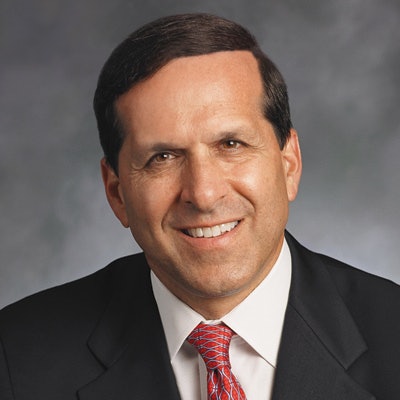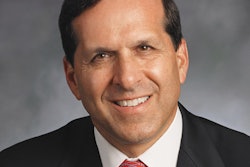
COVID-19 has created a scenario in which every dental practice is facing a business turnaround, and one of the most important factors in any business turnaround is generating revenue. Practices that want a less challenging and more successful recovery will work to understand revenue -- and design and implement strategies to help increase it.
Understanding revenue
Prior to the COVID-19 crisis, we've always advocated that practices focus heavily on production -- and we still do. All the data typically indicate that the higher the production, the higher the revenue.
 Roger P. Levin, DDS, is the executive founder of the Dental Business Study Clubs.
Roger P. Levin, DDS, is the executive founder of the Dental Business Study Clubs.However, practices also need to understand that production at a fee-for-service level is not the same as production when using patient financing, credit cards, or dental insurance. I've had numerous conversations with dentists over the years trying to explain to them the difference between what they produce and what they collect.
For example, a practice that produced $1.4 million per year but only collected $900,000 cannot say that it produced $1.4 million. In reality, it actually produced $900,000. Practices must understand that there is the fee-for-service patient, an indemnity insurance patient, a preferred provider organization (PPO) patient, a credit card patient, and a patient financing patient -- all of whom have varying effects on practice revenue. The good news is that every patient can have a positive effect on dental practices if the practice adjusts to fit within each financial option.
After the COVID-19 crisis, you must be ready to employ a wide variety of payment options to entice patients back to your office and increase your opportunity for steady production. And, while these added options may lower your collection rate, your first objective in a business turnaround is to break even. Practices that break even early on will move into profitability quickly.
However, if your financial options don't allow the opportunity for patients to accept treatment, then a large segment of production and revenue will be lost. Therefore, it makes sense post-COVID-19 to accept a lower collection rate that leads to a much higher profitability.
Consider the following three ways to increase revenue in your recovery.
1. Expand financial options
There are many patients who will be financially challenged and unable and/or unwilling to spend large sums of money on dentistry. We saw clear evidence of this after the 2008-2009 recession when 75% of dental practices declined in production. Unfortunately, we may be in a deeper recession after COVID-19, and when you add the health scare on top of that, once pent-up demand subsides, case rejection will be at its highest point ever.
Practices that want to recover must expand their financial options to include increased patient financing and payment plans. Candidly, I have always been against in-house payment plans because they inevitably cause collection rates to decline. In fact, we estimate that most collection rates will decline by approximately 8%. However, payment plans are still worth pursuing because many patients will not qualify for or be willing to use patient financing, representing a significant loss of production and revenue.
For example, if the practice can generate an extra $100,000 and $8,000 is defaulted by patients who do not complete their payment plans, the other $92,000 still covers overhead on those patients and adds a significant level of profit. In a business turnaround, it is far better to have significant profit, even at a lower profit margin, than no profit at all.
2. Prioritize all scheduling
During recovery, practices should give large cases special priority. New patients who have 200% to 300% higher financial value in the first 12 months than current patients with simpler single-tooth treatments should receive the earliest and most convenient appointments.
3. Institute an infection control fee
Don't think of having an infection fee as a moral decision. It's simply a business decision. Your business is now incurring significantly higher costs from ensuring patient safety that should be passed on to the customer. Simply let patients know that to be able protect them properly and comply with all U.S. Centers for Disease Control and Prevention (CDC) and ADA guidelines, there will be a $15 per visit infection control fee. Early feedback from dentists in states that are reopening indicates there has been no resistance to this fee. However, if a patient is unhappy with the fee, the practice can always waive it for that patient.
This is not about fairness or morality but rather financial performance and customer service. If the practice collects 96% of all infection control fees, it will keep the practice from experiencing significantly higher overhead and lower profitability at a time when practices are in a business turnaround and face a deep recession.
Summary
Revenue is the most critical factor in a business turnaround and your recovery from the COVID-19 crisis. Using the three recommendations above will help practices increase revenue for a faster, better, and deeper recovery.
Roger P. Levin, DDS, is the executive founder of the Dental Business Study Clubs. To contact Dr. Levin or to join the 40,000 dental professionals who receive his Practice Production Tip of the Day, visit www.levingroup.com or email [email protected].
The comments and observations expressed herein do not necessarily reflect the opinions of DrBicuspid.com, nor should they be construed as an endorsement or admonishment of any particular idea, vendor, or organization.



















